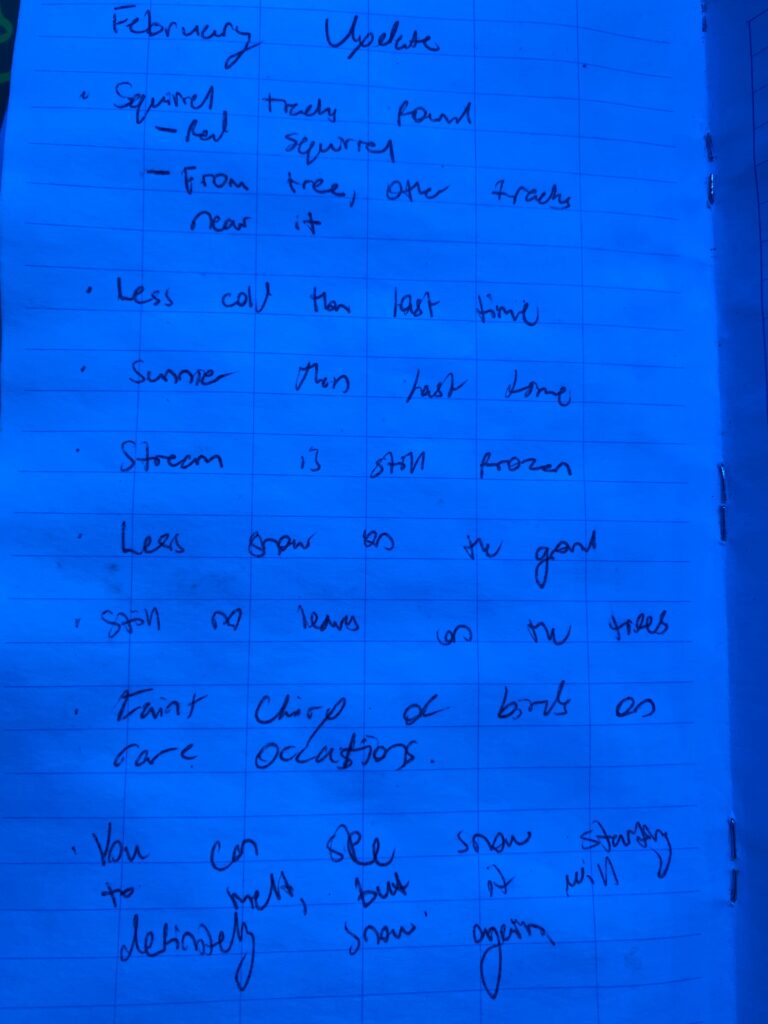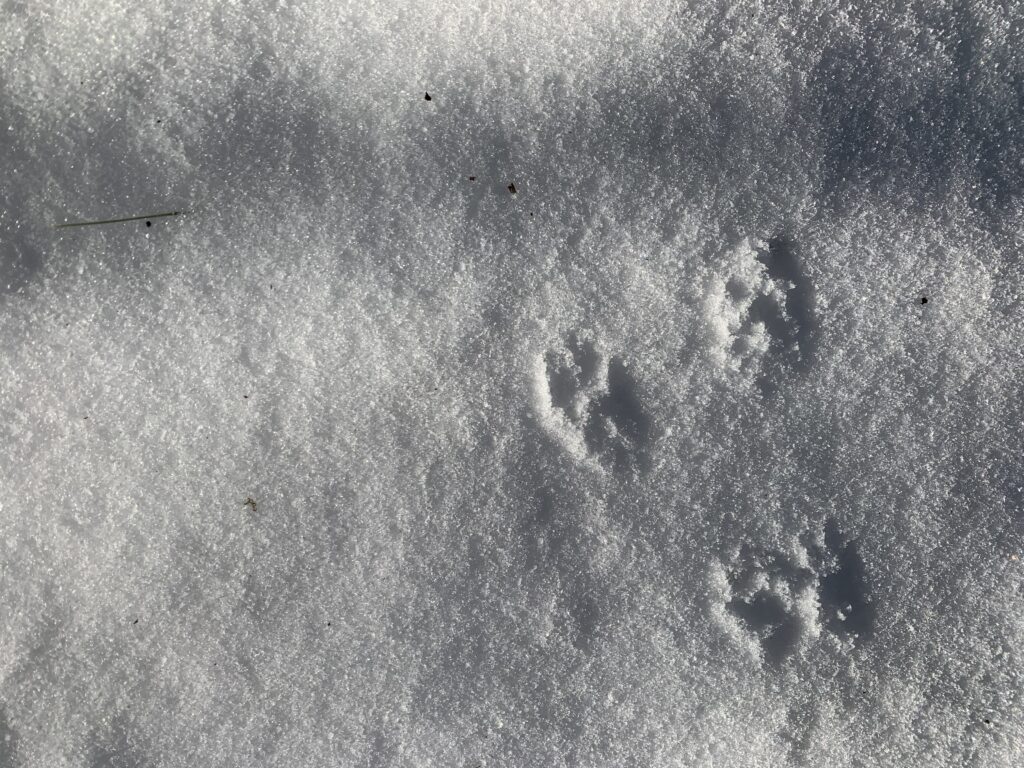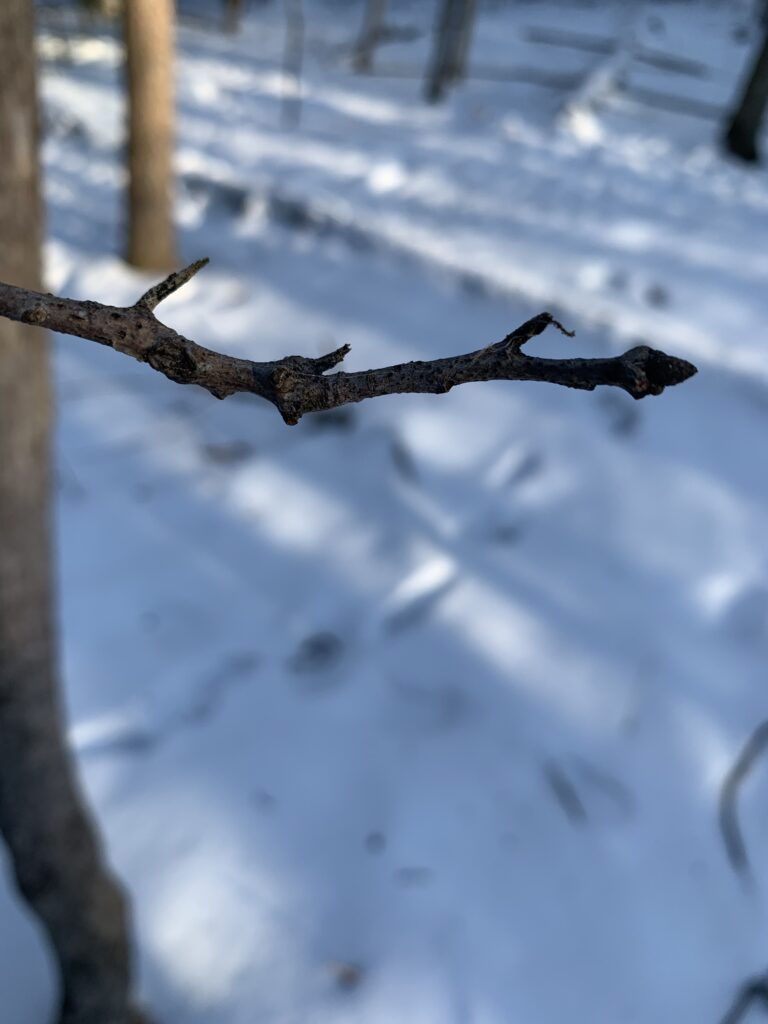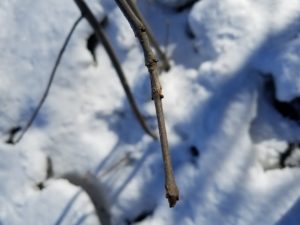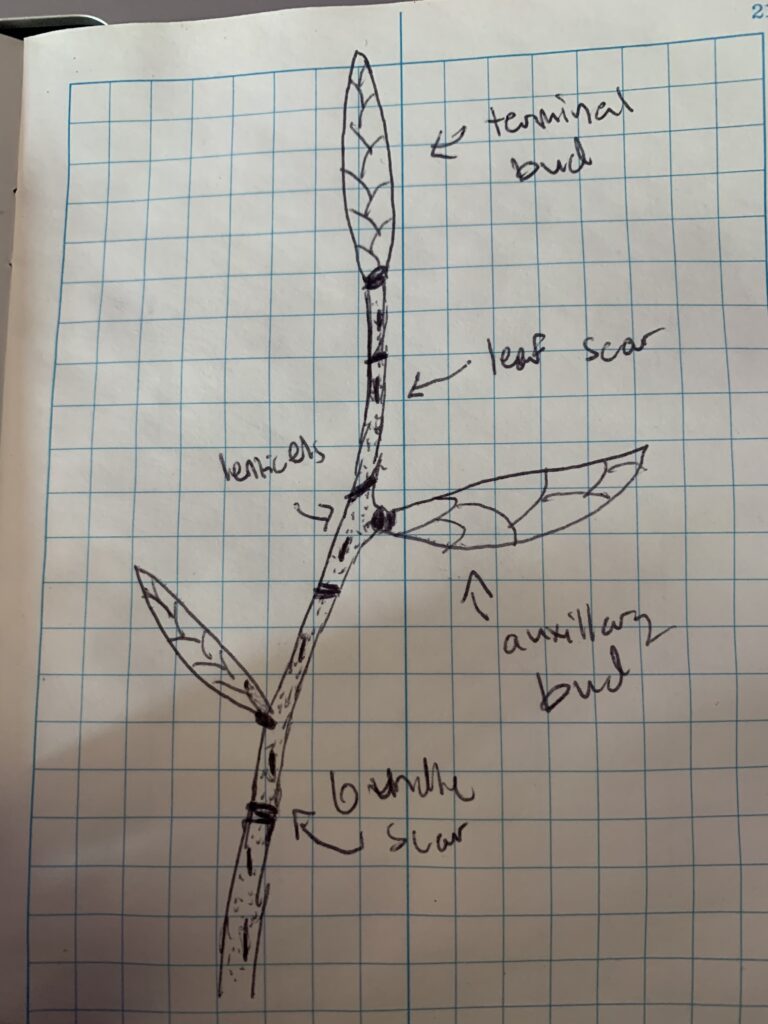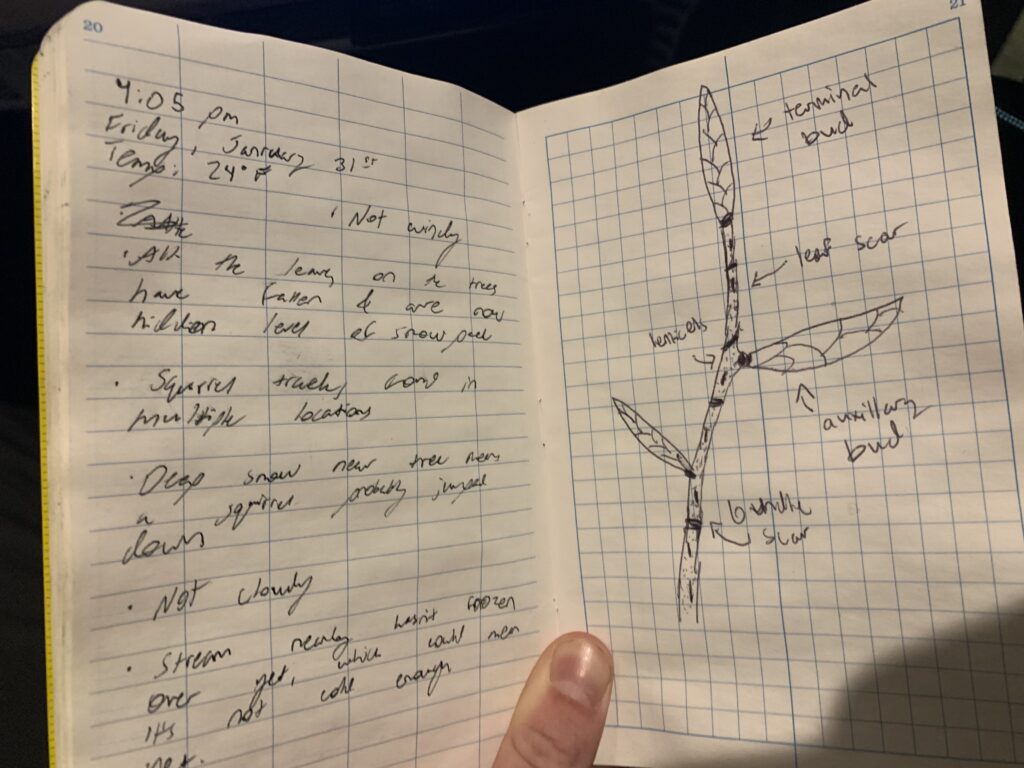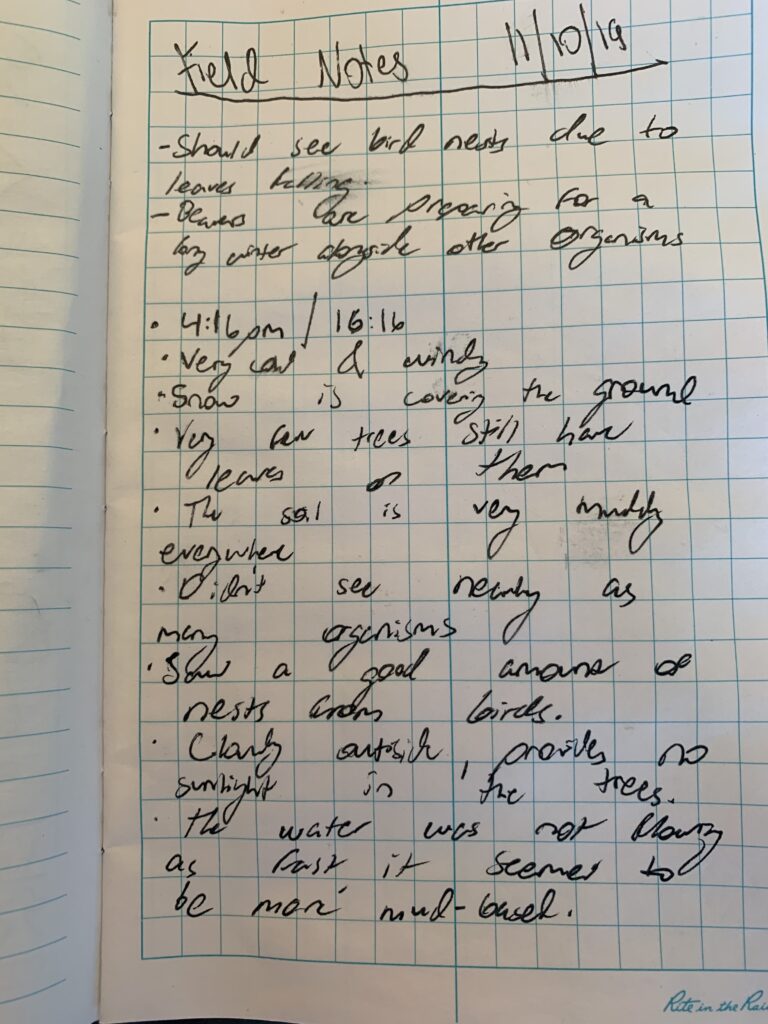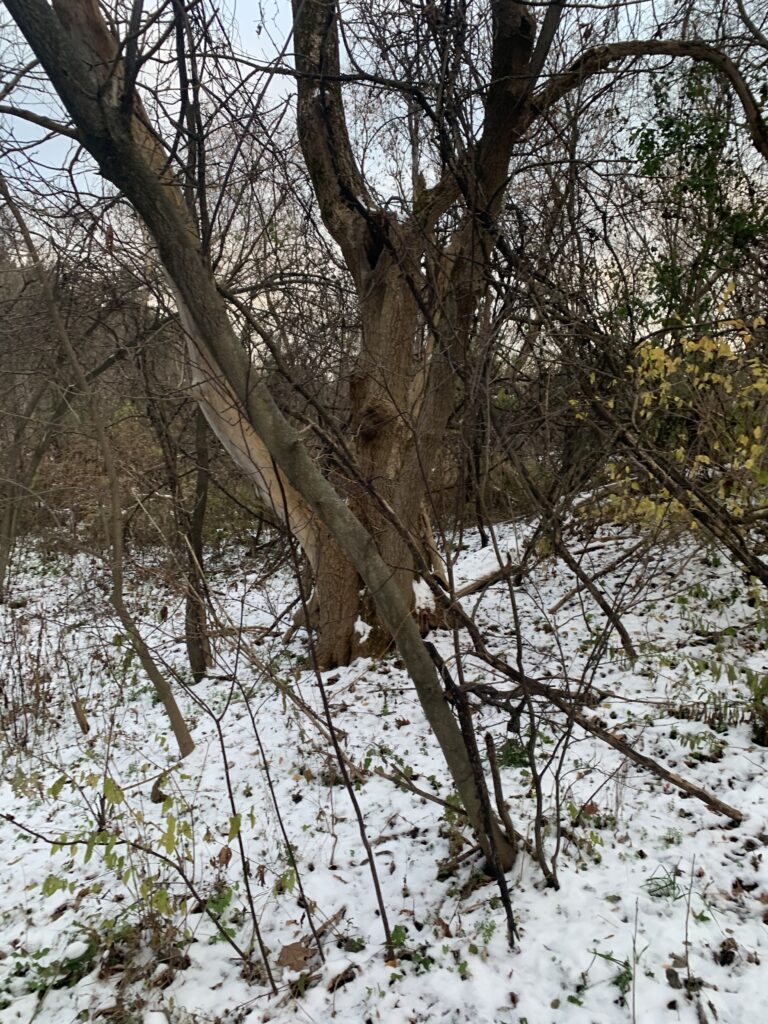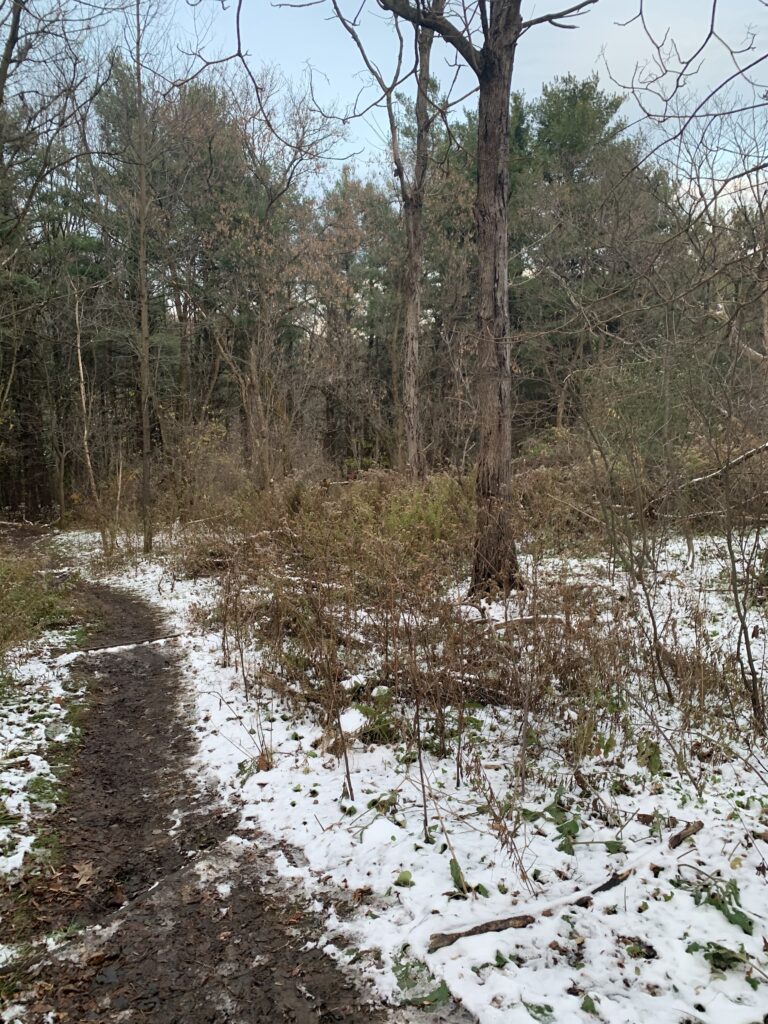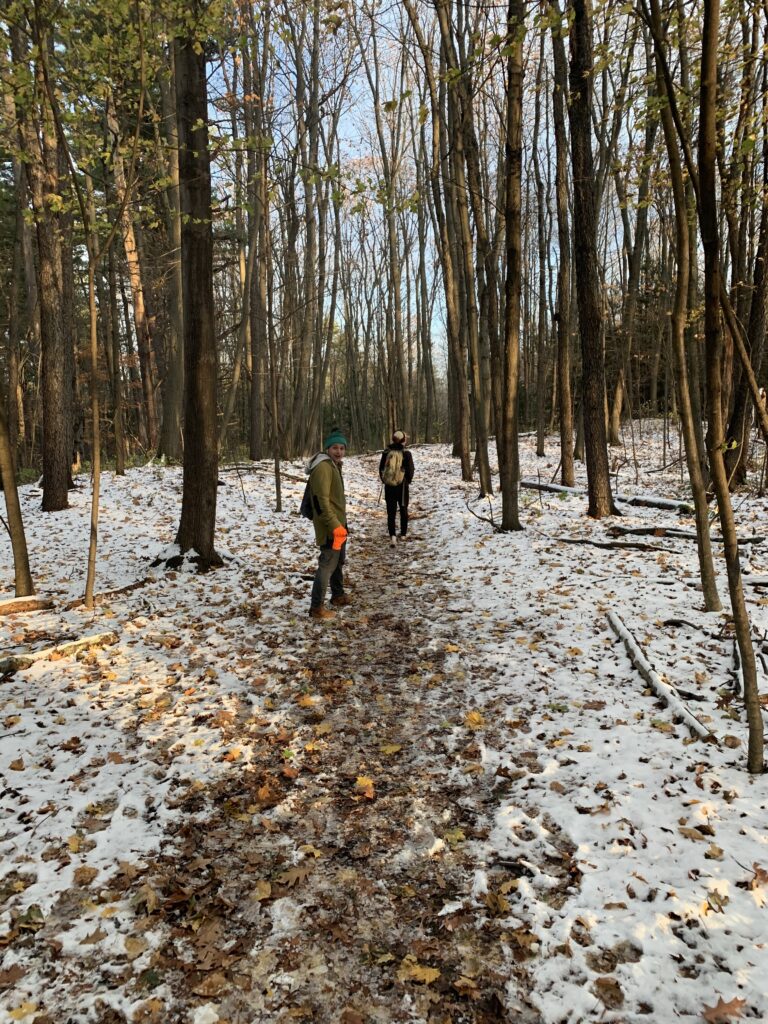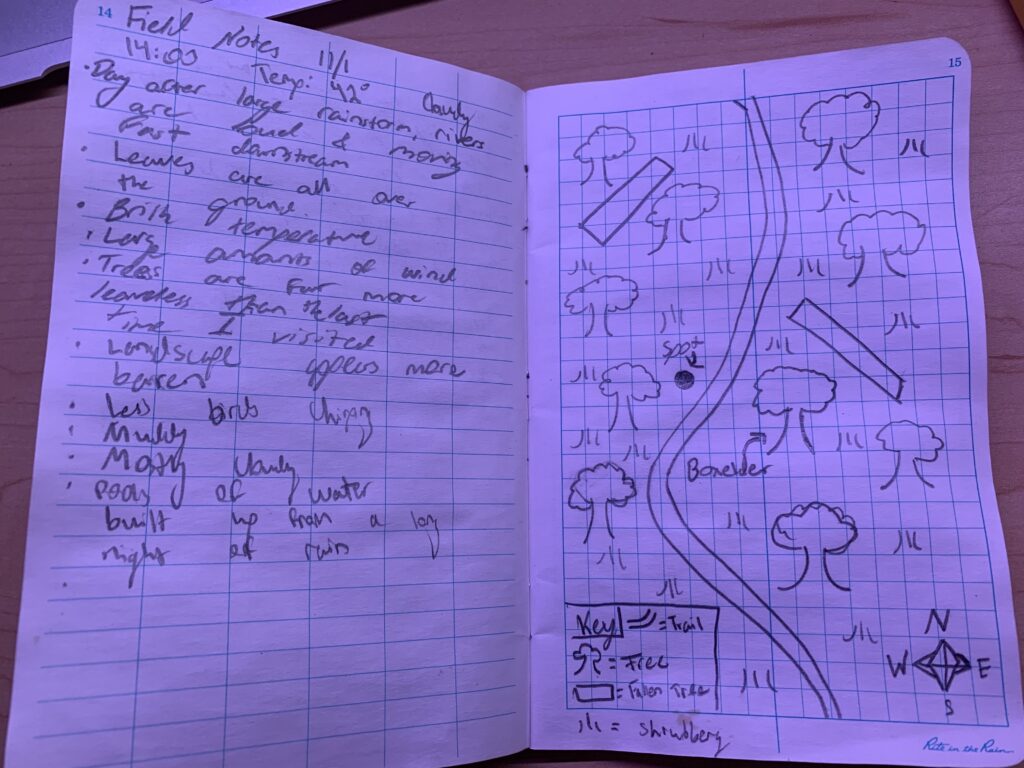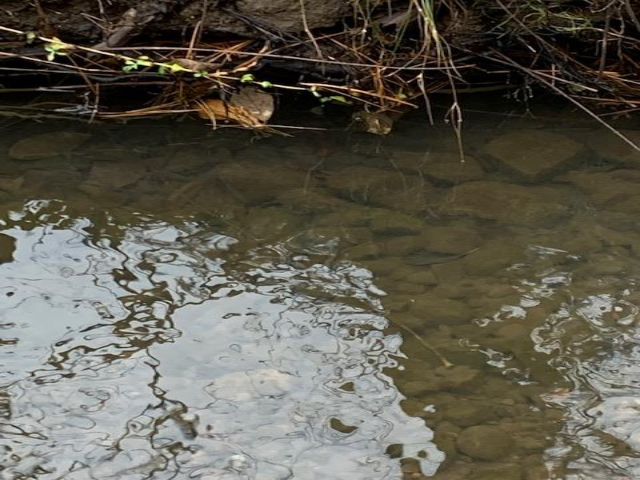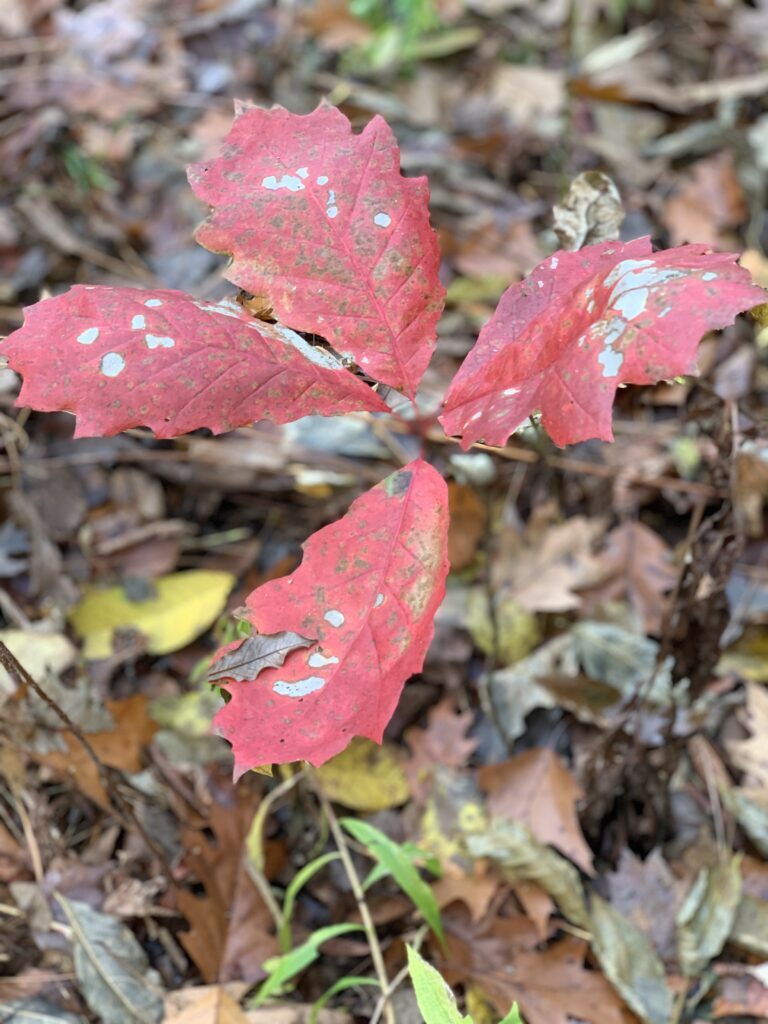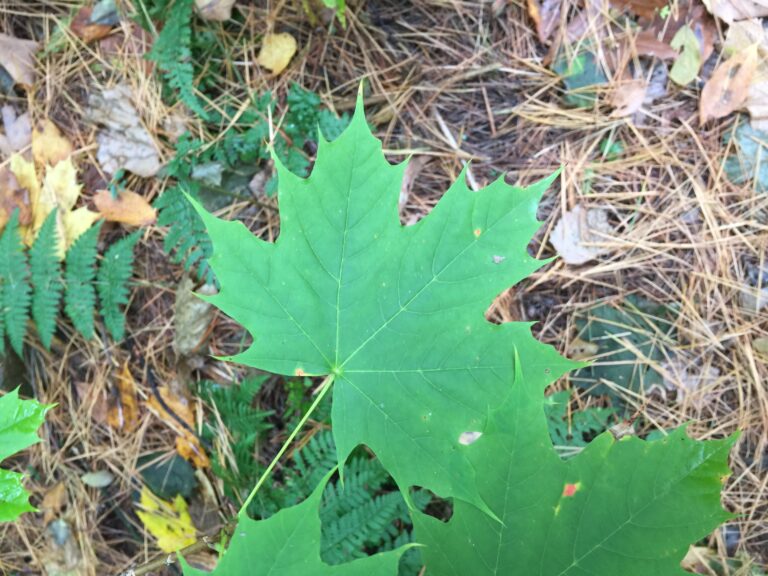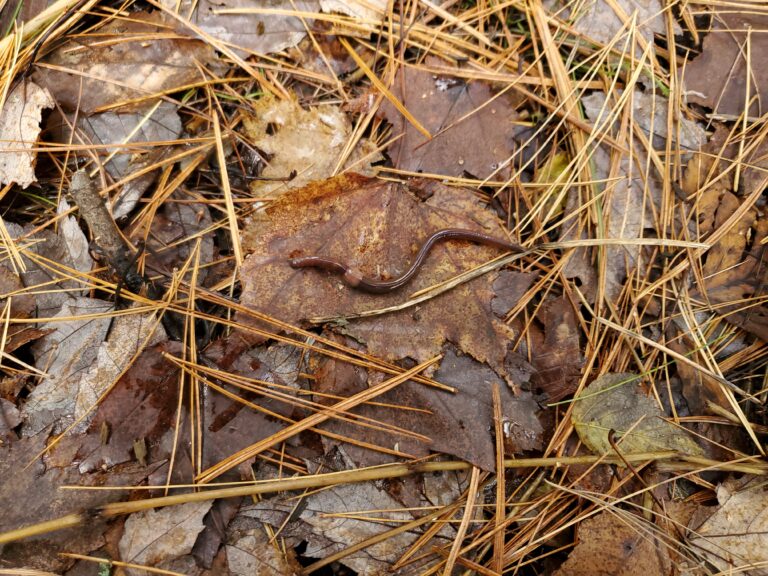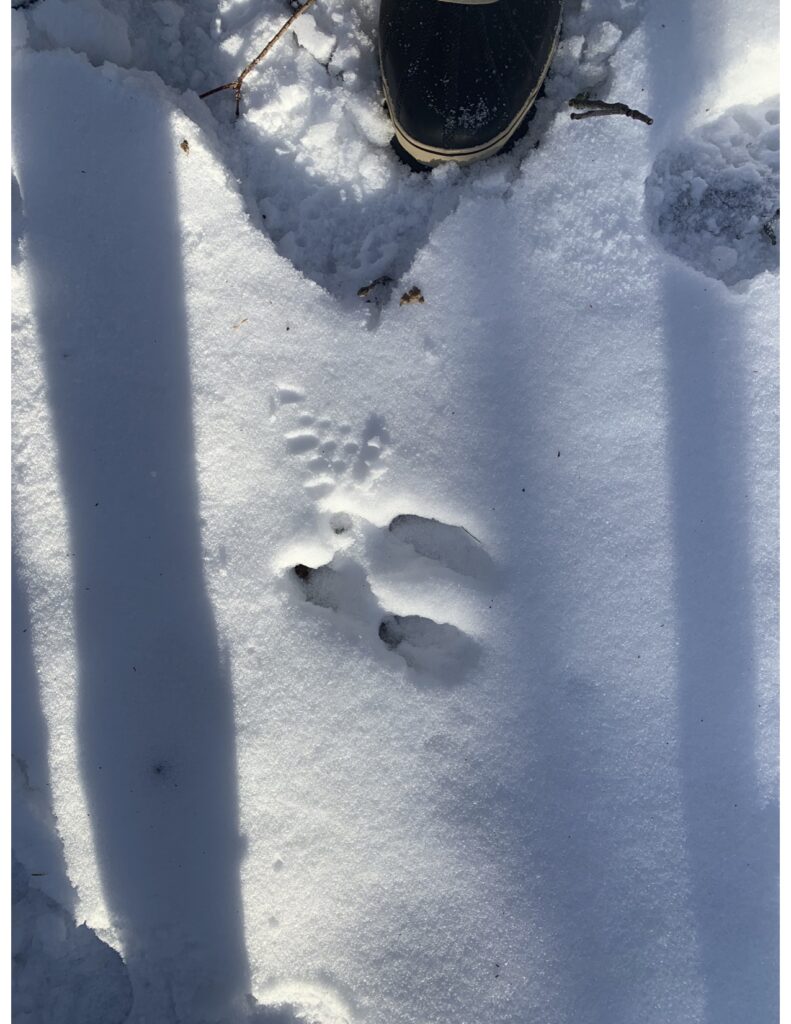
Red Squirrel Presence
- Significantly smaller than gray squirrels and have reddish-brown fur above with a white underside.
- Stores large amounts of food in its territories for wintertime.
- During the day it forages for food, and it sleeps during most of the night time.
- Red Squirrels are primarily granivores, which means they eat the seeds of plants.
- Top predators include: lynx, bobcats, coyotes, hawks, martens, foxes, and wolves.
- 1st Interaction – Tracks were found at the bottom of a tree, thus displaying an interaction where the squirrel uses the tree for shelter.
- 2nd Interaction – I also found a second trail of squirrel tracks close to the original tracks. This could mean that another squirrel was either with the first squirrel, or following closely behind it.
Phenological Changes
The last time I visited my Phenology site in Centennial woods, it was inhumanly cold and snow was piled at least a foot above the ground. This time, the temperature was far more manageable and there was less snow packed on the ground. I picked a good day to go, as it was relatively sunny and there wasn’t a high amount of wind. However it was still winter, so the trees remained with no leaves on them and I struggled to pick up an audible sign of wildlife. There are a multitude of fresh tracks scattered on the out skirts of the trail due to the lack of fresh snow- but with snow in the forecast most of these tracks will most likely be filled. The stream not far from my site also remained frozen, and I predict that the next month it will be flowing.
